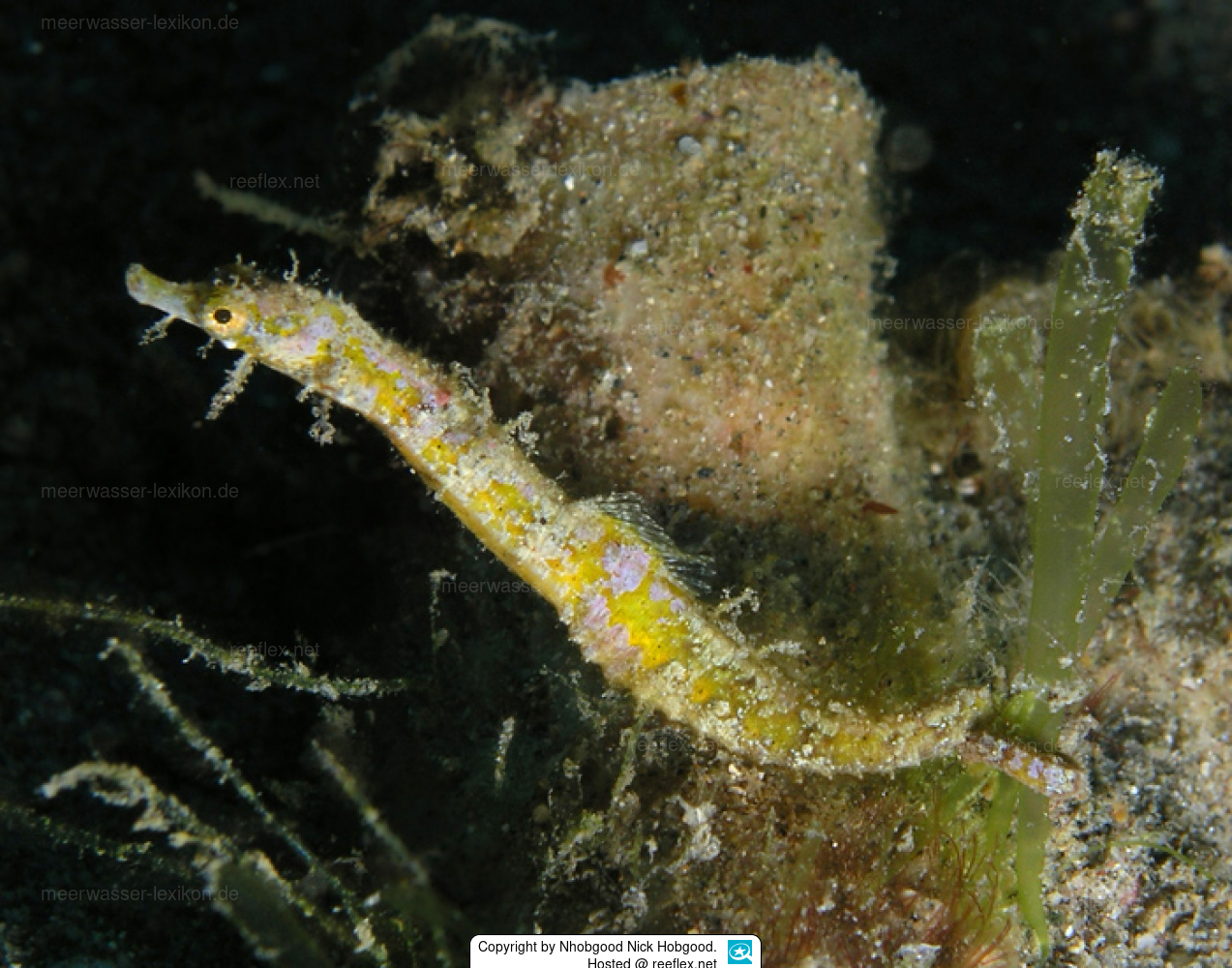Info
Fraser-Brunner & Whitley, 1949
Classification: Biota > Animalia (Kingdom) > Chordata (Phylum) > Vertebrata (Subphylum) > Gnathostomata (Superclass) > Pisces (Superclass) > Actinopteri (Class) > Syngnathiformes (Order) > Syngnathidae (Family) > Syngnathinae (Subfamily) > Acentronura (Genus) > Acentronura breviperula (Species)
Feeding intake.
The fish take a long time to eat at the beginning, before the food is taken up, a close inspection is carried out. After acclimatisation, the offered frozen food is eaten without problems. It should be noted that wild-caught fish behave differently than offspring when it comes to food intake. In the case of offspring, the size of the fish purchased also plays a role in the choice of food.
Classification: Biota > Animalia (Kingdom) > Chordata (Phylum) > Vertebrata (Subphylum) > Gnathostomata (Superclass) > Pisces (Superclass) > Actinopteri (Class) > Syngnathiformes (Order) > Syngnathidae (Family) > Syngnathinae (Subfamily) > Acentronura (Genus) > Acentronura breviperula (Species)
Feeding intake.
The fish take a long time to eat at the beginning, before the food is taken up, a close inspection is carried out. After acclimatisation, the offered frozen food is eaten without problems. It should be noted that wild-caught fish behave differently than offspring when it comes to food intake. In the case of offspring, the size of the fish purchased also plays a role in the choice of food.







 Nhobgood Nick Hobgood
Nhobgood Nick Hobgood








